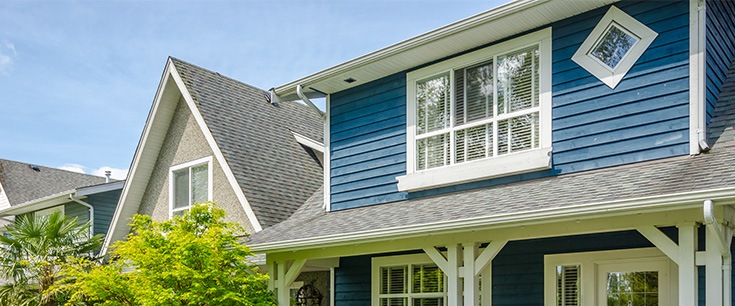Transform Your Bathroom: Expert Tips for a Seamless Tub-to-Shower Conversion in 2024
Considering a tub-to-shower conversion? Get straight to the point with actionable steps, transparent costs, and design considerations for turning your outdated tub into a refreshing shower space. This comprehensive guide offers pragmatic insights for a hassle-free transformation, helping you make informed decisions every step of the way, without the fluff.
Key Takeaways
- A successful tub-to-shower conversion involves careful planning, analyzing costs, choosing the right type of shower, considering space and size, and accounting for labor and material expenses. Safety features and customized aesthetics contribute significantly to the project’s overall success.
- Cost factors in a tub-to-shower conversion include not only the selection of materials, which range from cost-effective options like porcelain to more expensive choices like natural stone, but also labor costs, which can be the majority of the budget, and necessary spending on permits and code compliance.
- While conversions can enhance a bathroom’s functionality and style, they may affect resale value if all bathtubs are removed from a home. Retaining at least one bathtub is advised to appeal to a broader range of buyers. The project can provide a significant ROI, potentially up to 60%, by incorporating modern, barrier-free designs.
Understanding Tub-to-Shower Conversion Essentials
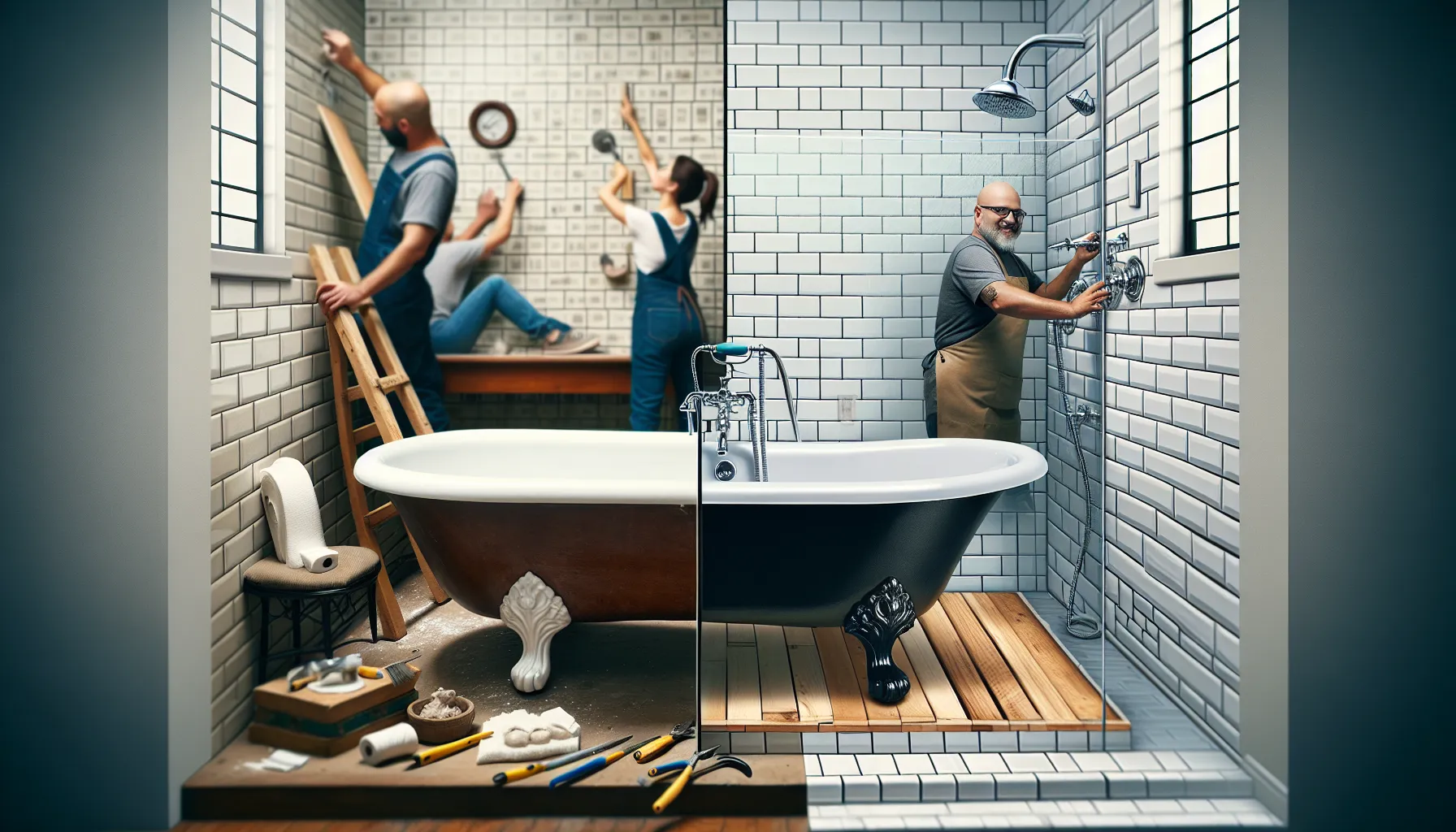
Embarking on a bathroom remodeling or tub-to-shower conversion is an exciting journey that allows you to truly customize your bathroom space. However, it’s important to understand the essentials of this process, including a tub-to-shower remodel, to ensure a smooth and successful renovation. From careful planning and cost analysis to selecting the ideal tub area shower type, each step plays a crucial role in the overall project.
Analyzing the total cost side of a shower conversion is a critical step in the planning process. It helps you understand what you’re investing in and allows you to budget accordingly. Remember, every aspect of the shower conversion cost, including the shower type, size, and space, influences the overall cost. But don’t worry, we’ll delve deeper into these cost factors in the sections that follow.
Choosing the right shower type is another important aspect to consider. Whether you prefer a classic tiled shower, a sleek walk-in shower, or a barrier-free curbless, shower enclosure, your choice will not only affect the overall cost but also the project’s scope and complexity. However, it’s not just about the cost. The shower type you choose should align with your lifestyle, personal preferences, and the existing bathroom space.
Finally, planning for the shower size and space in a small bathroom is crucial for shower installation. You need to take into account the existing bathroom dimensions and the layout of your plumbing. This will help you determine the size of your new shower and ensure that it fits perfectly into your small bathroom too.
Analyzing Tub-to-Shower Conversion Costs
When planning a tub-to-shower conversion, it’s crucial to conduct a thorough cost analysis. This will help you understand the various expenses involved in the project, such as labor, materials, and additional costs like permits. Labor costs, for example, constitute a large portion of the conversion expense, often reaching up to $1,000 or more depending on the complexity of the job.
Material costs, on the other hand, exhibit a wide range of average costs, reflecting the variety of choices available to homeowners. Additional average costs can include:
- The removal and disposal of the old bathtub
- Wall and floor preparation
- Debris haul away
- Clean-up
By understanding these cost factors, you can set a realistic budget for your project and avoid any financial surprises down the line.
Selecting Your Ideal Shower Type
Choosing the appropriate shower type is critical as it will define the overall project scope and budget for the conversion. There are only a few hundred dollars of a variety of shower types you can choose from. For instance, walk-in showers offer easy access and reduce the risks of falls, making them a significant safety improvement. They typically vary in conversion cost from $750 to $7,000, influenced by factors like dimensions and features. Considering the desired shower size and conversion cost is essential in making an informed decision for your bathroom renovation.
Tiled showers, on the other hand, have a broad cost range, starting from $225 to $1,920, the average price of which largely depends on the choice of tiling materials. If you’re looking for a more luxurious option, you might consider a curbless shower. However, they are generally more expensive to install, with costs ranging from $2,650 to $8,350 due to additional floor work and drainage considerations. Ultimately, your choice will hinge on your budget, existing bathroom space, and personal style preferences.
Planning for Shower Size and Space
When it comes to planning the size and space for your new shower, it’s essential to consider the existing bathroom dimensions and the layout of your plumbing. This will help you determine the size of your new shower and ensure that it fits perfectly into your bathroom. For comfort, you might want to consider a shower size of typically 36 x 48 inches. Also, designing the new shower space around your existing tub plumbing and keeping the layout and desired shower size in line with the original tub dimensions can significantly reduce labor costs.
Additionally, it’s crucial to ensure proper drain placement to avoid issues such as water accumulation and improper drainage during the conversion.
Breaking Down the Cost Factors
Now that we’ve grasped the essentials of a tub-to-shower conversion, let’s delve deeper into the cost factors. The overall cost of a tub-to-shower conversion is influenced by a variety of factors, including the choice of materials, labor costs, and permitting expenses. Understanding these factors can help you budget effectively and avoid unexpected costs during the conversion process.
The choice of material significantly influences the overall cost of the conversion. For tile shower,s for instance, options like natural stone or custom tiles can increase the overall expense. In contrast, materials such as either ceramic tiles or porcelain tiles can be more cost-effective. The size and shape of the new shower also play a role in the final project costs, where unique dimensions and larger sizes lead to increased material usage and higher installation costs.
When it comes to labor costs, this is where the majority of your budget will go. Contractors typically charge around $50 to $75 per hour for labor, while licensed plumbers may charge $75 to $150 per hour for plumbing work. The complexity of required plumbing changes, such as moving drains or installing new valves, can significantly increase labor costs. Therefore, it’s crucial to factor in these costs when planning your budget.
Material Choices and Their Impact on Price
The materials you choose for your shower conversion play a significant role in determining the overall cost of the project. Some options include:
- Natural stone or custom tiles: These can increase the expense.
- Ceramic or porcelain tiles: These can be more cost-effective, ranging from $1 to $17 per square foot.
- Cultured marble: This option ranges from $10 to $35 per square foot.
- Natural stone: This is a more luxurious option, ranging up to $100 per square foot.
Therefore, it’s worth spending some time researching different materials to find one that suits your budget and style preferences.
Labor Costs: What to Expect
Labor costs are another significant factor to consider when planning your tub-to-shower conversion. Contractors typically charge around $50 to $75 per hour for labor, while licensed plumbers may charge $75 to $150 per hour. The total cost of labor can also vary depending on the type of shower stall you choose. For instance, prefabricated shower stalls typically have lower labor costs, ranging from about $700 to $1,600, compared to tiled showers which are more labor-intensive and thus more expensive to install.
Additionally, if your project requires complex plumbing changes, such as moving drains or installing new valves, you can expect labor costs to increase.
Permitting Expenses and Bathroom Code Compliance
Apart from material and labor costs, you should also consider bathroom permit costs and bathroom code compliance. Bathroom remodeling permits can range from $180 to $2,000 depending on location and project scope. It’s necessary to see bathroom permit costs and obtain the proper permits for plumbing changes before removing the tub and beginning any bathroom renovations.
Moreover, compliance with local building codes may affect total project cost and duration. For instance, the minimum shower size set by the International Residential Code is 30 x 30 inches with a 24-inch-wide entry. Ensuring compliance with this and other local building codes can help you avoid potential penalties and ensure a smooth conversion process.
Enhancing Your Shower Conversion
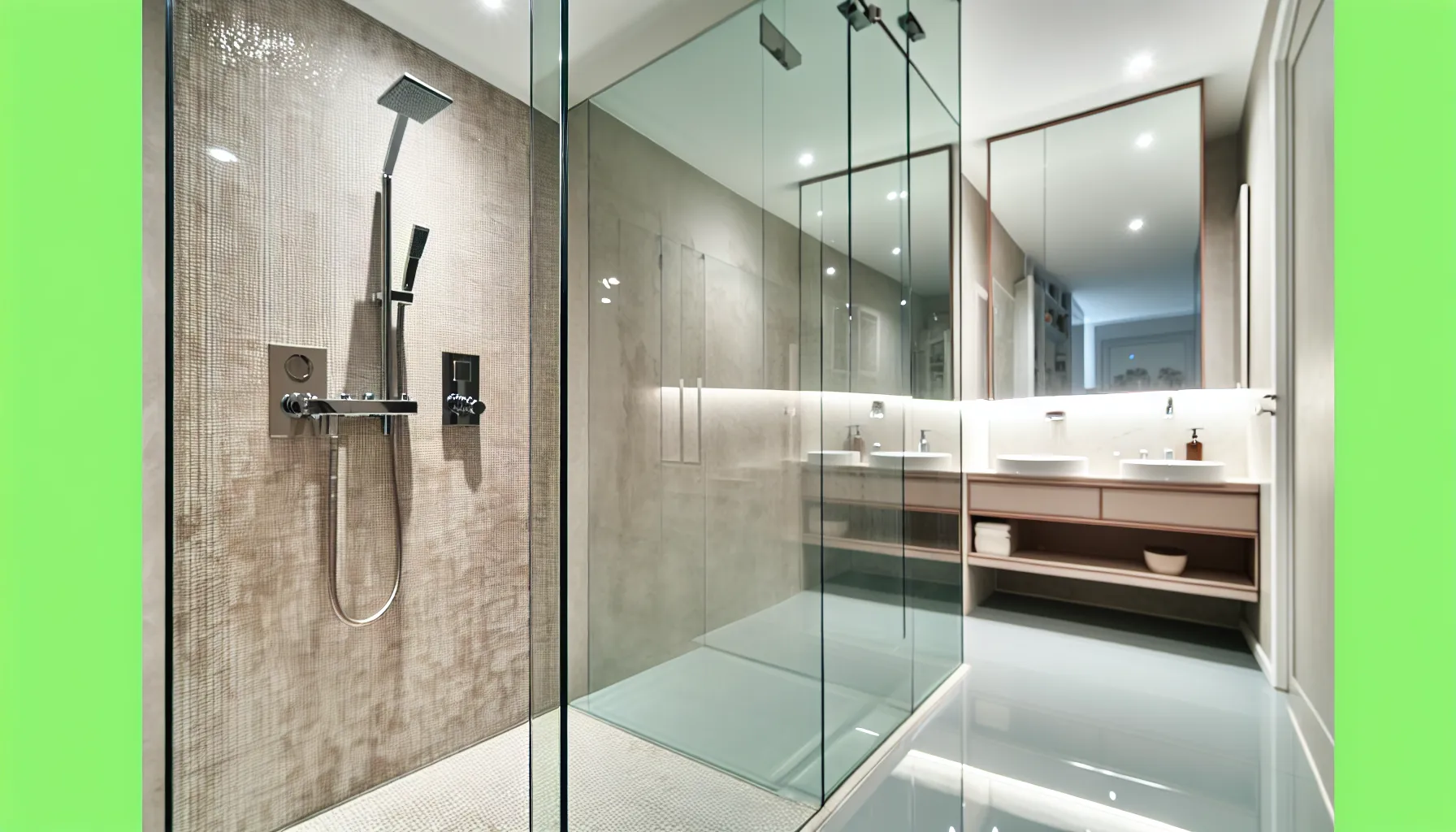
Transforming your old tub into a modern shower is not just about practicality – it’s also about creating a space that reflects your personal style and enhances your bathing experience. By choosing functional and stylish shower doors, integrating safety features, installing doors, and accessorizing your shower space, you can truly personalize your bathroom.
Choosing the right shower doors, including glass doors, can add a touch of elegance to your bathroom. Whether you prefer modern and spacious frameless doors or semi-frameless sliding doors, the choice of shower door can significantly impact the overall look and feel of your bathroom. Moreover, tempered glass shower doors with finishes such as chrome, matte black, and brushed nickel are sought-after for their durability and versatility in matching bathroom styles.
Safety features are another crucial aspect to consider when enhancing your shower conversion. Features such as grab bars and shower seats not only improve safety but also increase comfort, making the shower more accessible to individuals with disabilities, or anyone facing mobility challenges. Additionally, body showers and handheld showerheads provide additional convenience, with multiple spray heads and directional control that caters to individuals with limited mobility. While integrating safety and accessibility features can increase the project cost, they also provide great value by accommodating the needs of mobility-challenged homeowners during a shower installation. In a recent project in Waldorf, MD, these principles were beautifully executed. The outdated jetted tub was replaced with a sleek, modern shower unit that not only incorporated these safety features but also exceeded the homeowner’s expectations in both aesthetics and functionality. The transformation was a resounding success, creating a stunning and highly accessible shower space that perfectly demonstrates how thoughtful design can meet practical needs in spectacular fashion.
Lastly, accessorizing your shower space with features like LED lighting and high-end showerheads can provide a spa-like experience right in the comfort of your home.
Choosing Functional and Stylish Shower Doors
When it comes to enhancing your shower conversion, choosing the right shower doors is crucial. Shower doors can range from $200 to $3,000, with framed shower doors costing between $300 to $1,200, while frameless doors can cost more and offer a sleeker look. Popular shower door styles include the modern and spacious frameless doors like the DreamLine Unidoor and semi-frameless sliding doors such as the Delta Simplicity, both offering different aesthetic appeals.
Additionally, tempered glass and shower stalls and doors with finishes such as chrome, matte black, and brushed nickel are sought-after for their durability and versatility in matching bathroom styles. Remember, your choice of shower door should not only reflect your style preferences but also complement the overall design of your bathroom.
Integrating Safety Features
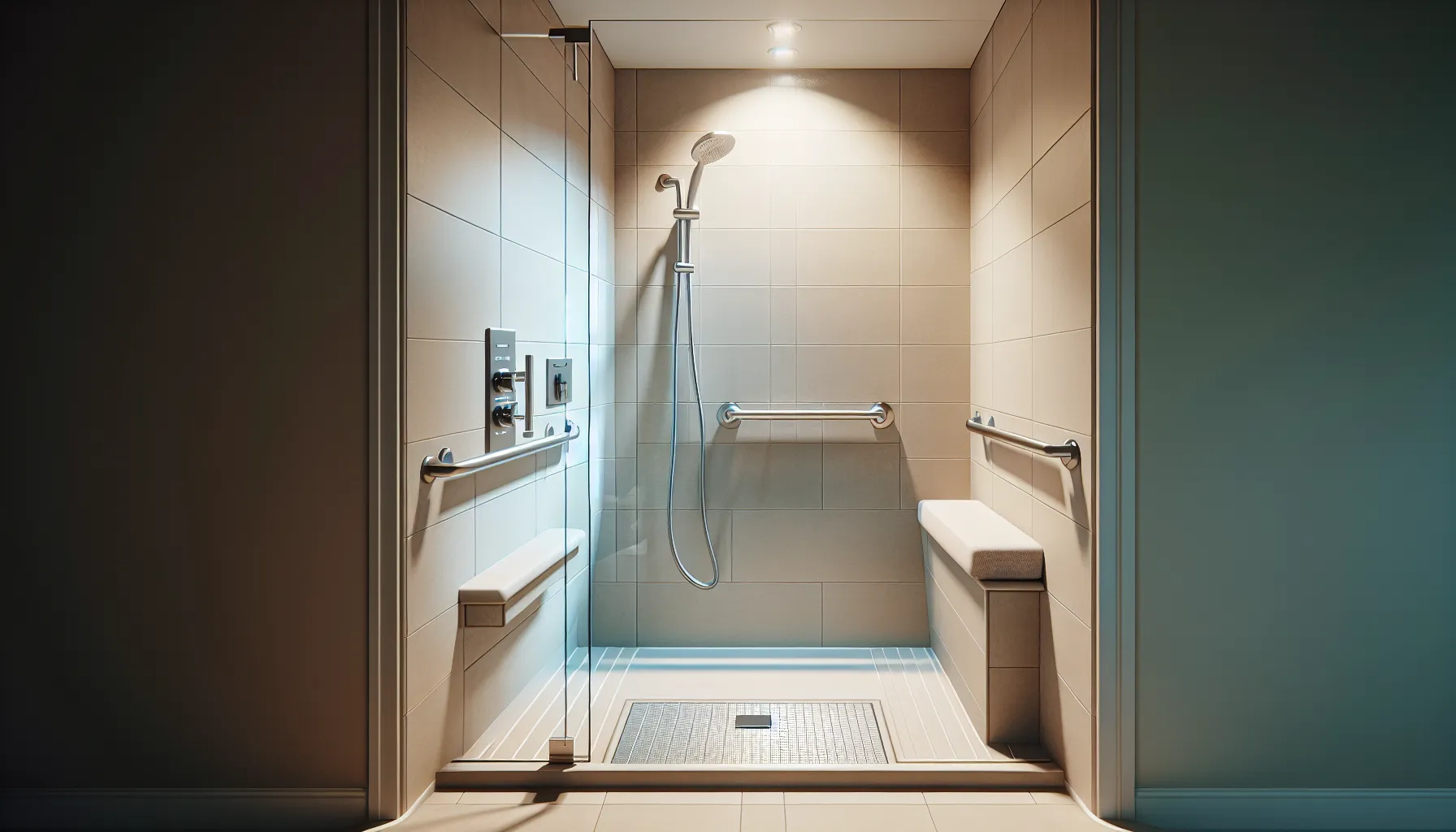
Safety should always be a top priority when planning a walk in shower conversion. Features such as grab bars and shower seats not only improve safety but also increase comfort, making a walk-in shower more accessible to older individuals, individuals with disabilities, or anyone facing mobility challenges. Curbless and a walk in shower move-in showers enhance accessibility by offering a seamless transition from the bathroom floor, with the option to include custom features like grab bars.
Additionally, body showers and handheld showerheads provide additional convenience, with multiple spray heads and directional control that caters to individuals with limited mobility. While integrating safety and accessibility features can increase the project cost, they also provide great value by accommodating the needs of mobility-challenged homeowners during a shower installation.
Accessorizing Your Tub-to-Shower Conversion Space
Accessorizing your shower space is a great way to add a touch of luxury to your bathroom. From installing a digital temperature control system to adding wall-mounted soap dispensers, there are numerous ways to enhance your shower experience. Some ideas include:
- High-end showerheads with body spray jets, which can transform your shower into a spa-like oasis
- Incorporating niches and shelves for practical storage to keep your shower space organized
- Using open shelving to display decorative items or luxurious bath products for a personal touch
Lastly, don’t forget about the smaller details. For instance, towel bars and even shower stall door handles that match other bathroom fixtures can create a unified design aesthetic in your shower space.
Maximizing Savings Without Sacrificing Quality
While a tub-to-shower conversion can be a significant investment, there are numerous ways to maximize savings without sacrificing quality during a complete bathroom remodel. By making smart material selections, considering DIY options, and finding the right contractor, you can keep your costs down while still achieving a stunning and complete bathroom remodel transformation.
Choosing cost-effective materials is one of the best ways to save money on your shower conversion. Some cost-effective materials for tub-to-shower conversions include:
- Ceramic and porcelain tiles
- Granite
- Vinyl
- Limestone
- Acrylic
- Fiberglass
Acrylic and fiberglass are particularly beneficial due to their affordable cost, lightweight nature, durability, and the non-porous surface of acrylic which helps prevent mold and simplifies cleaning.
If you’re handy and confident in your DIY skills, you might consider taking on some aspects of the conversion process yourself. DIY conversion kits can significantly lower the costs of tub-to-shower conversions, offering potential savings of anywhere from $1,000 to $2,000, depending on the complexity and scope of the plumbing work done. However, it’s important to note that a lack of necessary plumbing skills can lead to leaks or damage that may result in higher repair costs. Therefore, if you’re unsure about any aspect of the conversion process, it’s always best to hire a professional contractor.
Smart Material Selections
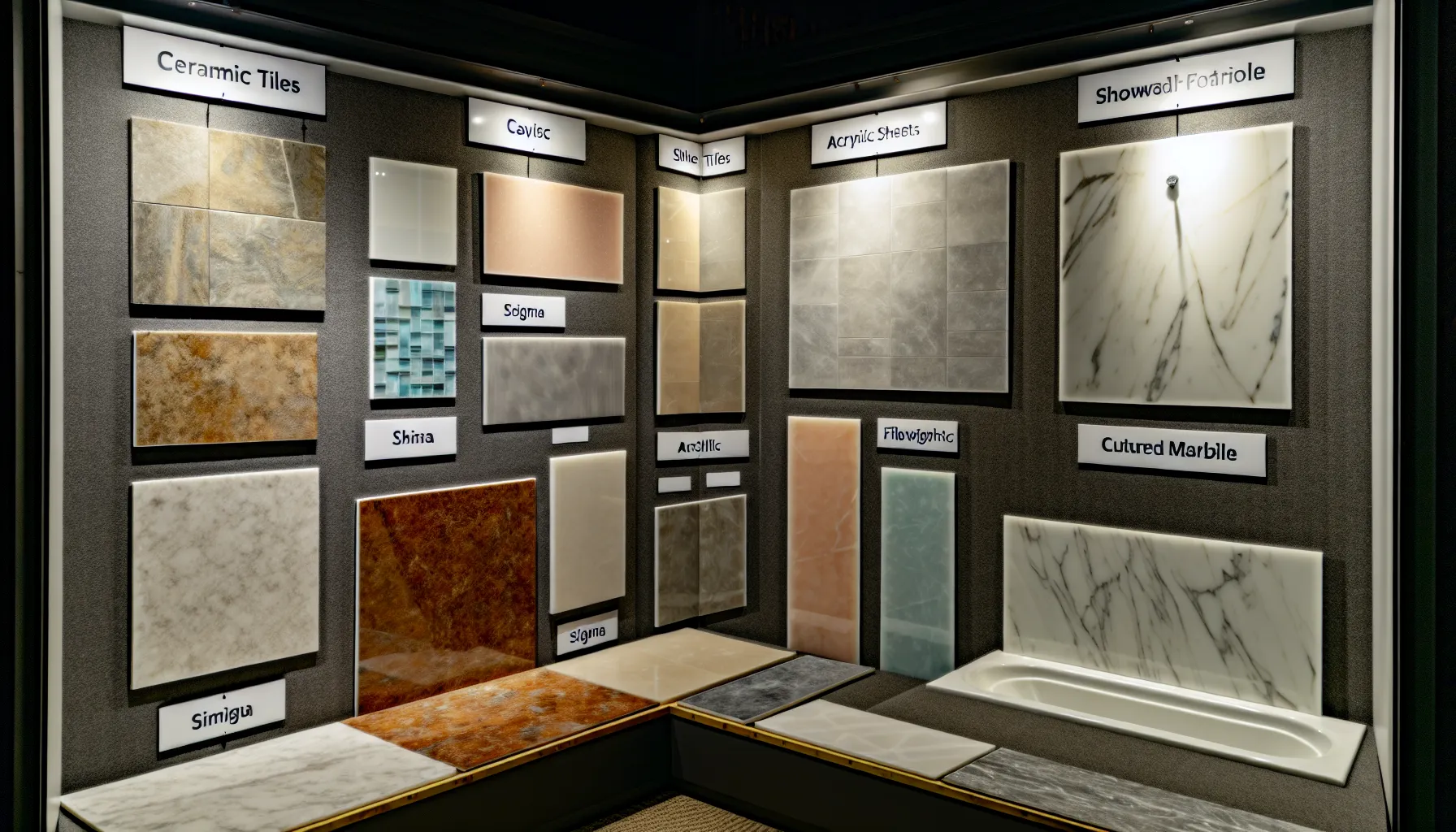
Choosing cost-effective materials that don’t compromise on quality is a smart strategy to save money on your shower conversion. Ceramic and porcelain tiles, for instance, are cost-effective materials that offer durability and a wide range of design options. On the other hand, materials like natural stone or custom tiles can significantly increase the overall expense. Therefore, it’s important to research different materials and select one that suits your budget and style preferences.
Remember, the material you choose will not only affect the look and feel of your shower but also its longevity and maintenance needs.
DIY Considerations
For those who are handy and confident in their DIY skills, taking on a tub-to-shower conversion can be a rewarding and cost-saving project. DIY conversion kits can significantly lower the costs of tub-to-shower conversions, offering potential savings of anywhere from $1,000 to $2,000, depending on the complexity and scope of work. However, it’s crucial to consider the potential challenges and risks involved.
Here are some things to keep in mind:
- Lacking the necessary plumbing skills can lead to leaks or damage that may result in higher repair costs.
- It’s important to carefully follow the instructions provided with the DIY conversion kit.
- Make sure to properly measure and plan the layout before starting the project.
- Consider consulting with a professional plumber or contractor if you’re unsure about any aspect of the conversion.
By being well-prepared and taking the necessary precautions, you can successfully complete a tub-to-shower conversion on your own.
Moreover, a DIY tub-to-shower conversion may take longer than if done by a more professional installer, especially if unexpected issues arise. Therefore, before deciding to go the DIY route, carefully consider your experience level, available time, and the complexity of the project.
Finding the Right Contractor
If you decide to hire a more professional installer for your tub-to-shower conversion, finding the right contractor is key. A reputable contractor who specializes in tub-to-shower conversions can ensure higher quality results and reduce the risk of errors, particularly for homeowners who lack confidence in their DIY skills. It’s important to ensure that the selected contractor is licensed, insured, and has a track record of positive reviews from previous clients.
Before finalizing a contract, ask the remodeler about:
- Their schedule
- Estimated time of arrival
- Materials availability
- How they handle potential delays
This will help maintain transparency and set realistic expectations.
Preparing for Your Tub-to-Shower Conversion
Preparation is key to a successful tub-to-shower conversion. From setting timeline expectations and handling the old bathtub to anticipating potential challenges, being well-prepared can help ensure a smooth and stress-free conversion process.
Before starting the conversion process, it’s crucial to set realistic timeline expectations. An average tub-to-shower conversion usually takes a few days, but the duration can vary based on the project’s complexity and unforeseen issues. For instance, if you discover water damage during the conversion process, it will need to be addressed immediately, which can add time to the project. Therefore, it’s important to be patient and allow enough time for the project to be completed properly.
Handling the old bathtub is another important aspect to consider. Professional removal and disposal of an old bathtub typically range from $150 to $300, with possible higher costs for heavy or difficult-to-remove old tub/s. If you choose to handle the removal and disposal of the old bathtub yourself, make sure to disconnect water lines, remove detachable components, and wear safety gear.
Lastly, it’s important to anticipate potential challenges during the conversion process. From unexpected repairs such as tile repair and wall patching to addressing water damage, being proactive can save time and prevent additional costs.
Timeline Expectations
Understanding the typical timeline for a tub-to-shower conversion project can help you set realistic expectations and plan accordingly. An average conversion usually takes a few days, but the duration can vary based on the project’s complexity. For instance, acrylic and fiberglass shower installations can significantly reduce conversion time, potentially allowing completion in just one day. However, if your project requires complex plumbing changes or the installation of luxurious features, it might take longer.
Moreover, the time it takes to obtain permits or resolve unexpected problems can also add to the project’s duration. Therefore, it’s important to be patient and allow enough time for the project to be completed properly.
Handling the Old Bathtub
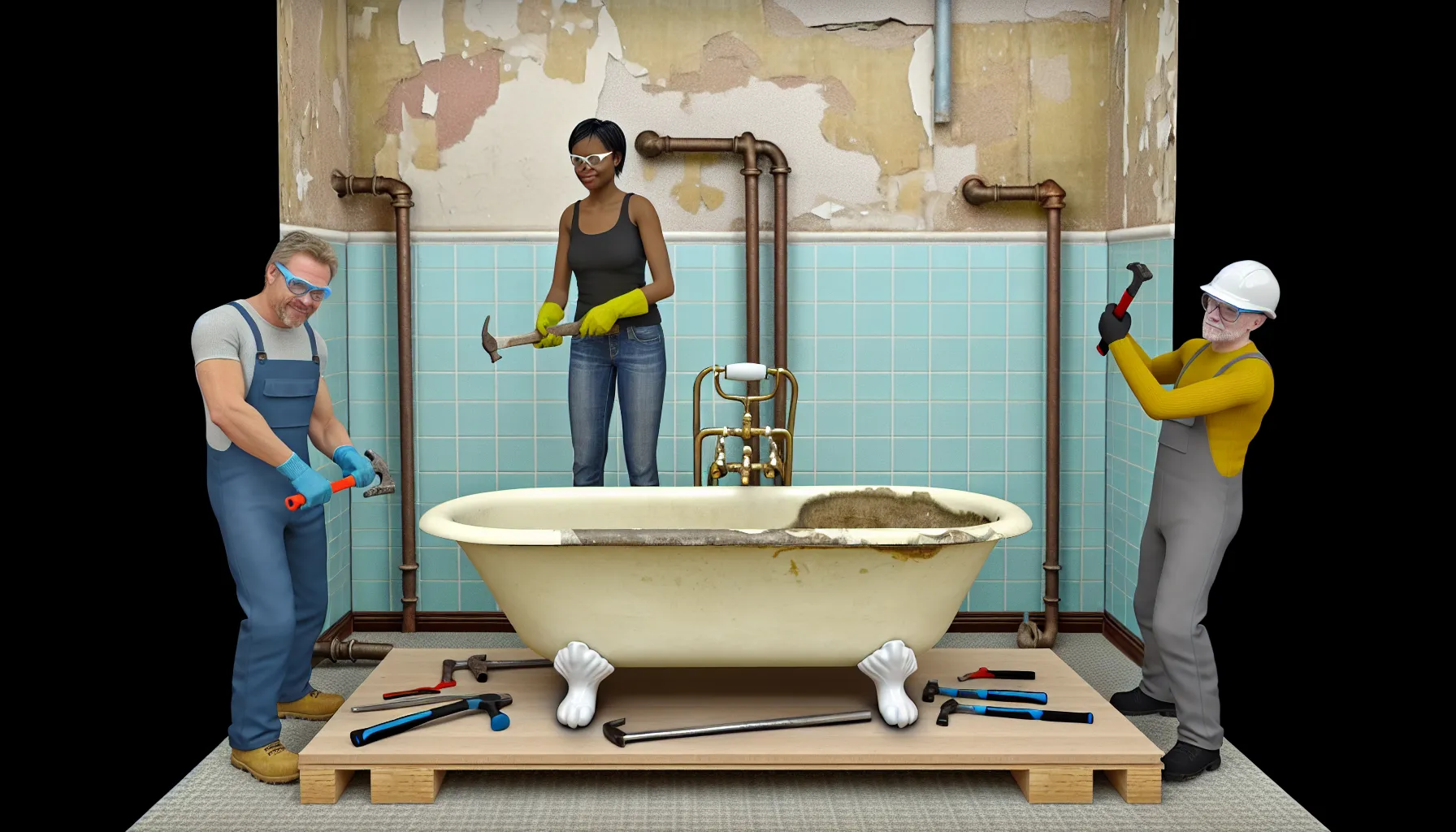
Handling the old bathtub is an important part of the tub-to-shower conversion process. Professional removal and disposal of an old bathtub typically range from $150 to $300, with possible higher costs for heavy or difficult-to-remove old tub/s. If you’re considering a DIY bathtub removal yourself, take note that it requires a two-person effort and involves disconnecting water lines, removing detachable components, cutting the material into pieces, and wearing safety gear.
Once the old bathtub is removed, the pieces and any wall material should be taken to a dumpster or recycling facility. Remember, proper handling of components containing hazardous materials is essential to ensure safety and environmental responsibility.
Anticipating Potential Challenges
During a tub-to-shower conversion, it’s important to anticipate and address potential challenges to ensure a smooth and successful process. For instance, during tub removal, unexpected repairs may be necessary, including tile repair and wall patching. Damages such as cracked tiles, or the need to replace pipes could add unplanned costs cost extra, to the conversion project.
Moreover, any water damage found during the conversion process should be addressed immediately to prevent further issues. By implementing a proactive approach to identifying and fixing damages, you can ensure a more seamless and efficient conversion process.
Customization Options for Your New Shower
One of the most exciting aspects of a tub-to-shower conversion is the opportunity to customize your new shower. From the custom shower and wall design and custom shower and pan flooring to personal touches, there are numerous ways to make your new shower truly yours. Let’s explore some of the customization options that can help you create a custom shower, that reflects your personal style and meets your specific needs.
When it comes to shower wall design, incorporating unique ceramic tile and patterns such as herringbone or basket-weave layouts can add visual interest and personalization. You can also consider integrating natural light into the bathroom to enhance the showering experience. This may involve ceiling or exterior wall modifications to install skylights, solar tubes, or glass blocks.
The flooring of your shower pan is another area where you can express your personal style. Some options to consider are:
- Non-slip mosaic tiles, which ensure safety and offer varied design possibilities
- Pebble tile floors, which add a textured appearance to the shower while also contributing to slip resistance
- Large format tiles, which minimize grout lines, simplify maintenance, and provide a modern, seamless appearance.
Shower Wall Design and Features
Customizing your own tile in shower and wall design is a pivotal way to reflect your personal style in the bathroom space. Incorporating unique tile patterns such as herringbone or basket-weave layouts adds visual interest and personalization to shower walls. Additionally, warm-toned natural stones with strong veining are sought after for shower walls due to the growing trend for personalized and adventurous bathroom designs.
Installing features such as body jets and rainfall showerheads on the tiled shower walls can also enhance functionality in shower, and create a spa-like atmosphere. Lastly, integrating natural light into the bathroom can enhance the showering experience; this may involve ceiling or exterior wall modifications to install skylights, solar tubes, or glass blocks.
Floor Options for Your Shower Pan
Choosing the right shower stall floor fronting for your shower pan is another important aspect of customization. Some options to consider are:
- Non-slip mosaic tiles: These are a preferred option for shower pans, ensuring safety and offering varied design possibilities.
- Pebble tile floors: These add a textured appearance to the shower while also contributing to slip resistance.
- Large format tiles: If you prefer a modern, seamless appearance, large format tiles might be the ideal choice. They minimize grout lines, simplifying maintenance.
The choice of a shower floor can greatly impact the look and feel of your shower, so take the time to explore different options and choose one that aligns with your style preferences and safety requirements.
Personal Touches to Make It Yours
Adding personal touches to your shower can truly make it your own. Here are some ideas to personalize your shower space:
- Select a shower curtain with a bold pattern or vibrant color.
- Install a digital temperature control system.
- Use high-end showerheads with body spray jets for a spa-like experience.
- Incorporate niches and shelves for practical storage.
- Use open shelving to display decorative items or luxurious bath products.
These personal touches will make your shower stall space feel unique and inviting.
Remember, every detail counts when it comes to personalizing your shower space, so don’t be afraid to add elements that reflect your personal style and preferences.
Navigating the Resale Value Debate
A common concern among homeowners considering a tub-to-shower conversion is how it will impact their home’s resale value. The good news is that converting a tub to a shower doesn’t typically hurt resale value unless it results in the home having no bathtubs. Having at least one bathtub in a home can make it appealing to a broader range of potential buyers, including those with children or those who enjoy bathing options. However, removing every bathtub in a home can make it less appealing to segments of buyers, possibly affecting the resale value negatively.
Having at least one bathtub in a home can be beneficial for resale value. This is because most buyers look for a home with at least one bathtub, especially families with young children or individuals who enjoy bathing options. According to the National Association of Realtors, keeping at least one tub is recommended for good resale value, but converting the rest to showers doesn’t hurt the resale value. Therefore, if you’re planning a tub-to-shower conversion, it’s advisable to ensure that you have at least one other bathtub in your home.
When it comes to evaluating the return on investment (ROI) of a tub-to-shower conversion, it’s important to consider not only the initial cost of the project but also the potential increase in your home’s value. Converting a tub to a modern shower in 2024 can provide homeowners with a return on investment of up to 60%. This renovation project can significantly increase the value of the home. Shower conversions that incorporate barrier-free access not only improve functionality but also make the feature more appealing to a broader market. Therefore, while a tub-to-shower conversion can be a significant investment, it can also potentially increase your home’s resale value, making it a worthwhile project.
The Importance of Having at Least One Tub
The question of whether to keep at least one bathtub in your home when converting a tub to a shower can be a topic of debate. However, most real estate professionals agree that having at least one bathtub in a home can make it appealing to a broader range of potential buyers, including those with children or those who enjoy bathing options. As such, removing every bathtub in a home can potentially affect the resale value negatively.
Therefore, while a shower might be more convenient for your daily use in shower only, keeping at least one tub is recommended for good resale value.
Evaluating the ROI of a Shower Conversion
Evaluating the return on investment (ROI) of a full shower remodel conversion is a critical part of the planning process. Converting a tub to a modern shower in 2024 can provide homeowners with a return on investment of up to 60%. This renovation project can significantly increase the value of the home. This is due to the growing demand for modern and attractive features in bathrooms.
Shower conversions that incorporate barrier-free access not only improve functionality but also make the feature more appealing to a broader market. So, while shower conversion cost and the initial investment might seem significant, the potential increase in your home’s value can make the project worthwhile.
Summary
In conclusion, converting a tub to a shower is a manageable project that can significantly enhance your bathroom’s functionality and aesthetic appeal. From understanding the essentials of the conversion process and analyzing the cost factors to selecting the ideal shower type and planning for the size and space, each step plays a crucial role in the overall project. By making smart material selections, considering DIY options, and finding the right contractor, you can maximize savings without sacrificing quality.
Adding personal touches and customizing your new shower can truly make it your own, while incorporating safety features can increase accessibility and provide peace of mind. While a tub-to-shower conversion can be a significant investment, it can also potentially increase your home’s resale value, making it a worthwhile project. So, if you’re dreaming of transforming your old, outdated bathtub into a modern, luxurious shower, why not start planning your bathroom renovation today?
Frequently Asked Questions
How much does it cost to convert a bathtub to a shower?
Converting a bathtub to a shower typically costs between $1,200 and $8,000, with an average cost of around $3,000. The total cost of converting tub also varies based on factors like size, accessibility features, fixtures, and installation.
Is it a good idea to convert tub to shower?
Converting a tub to a shower is a good idea for a safer and more spacious bathroom. It can also make your bathroom look bigger and less cramped.
How to turn a bathtub into a shower cheap?
To turn a bathtub into a shower cheap, consider using a prefabricated shower kit, which comes with the necessary components like a shower pan, wall panels, and doors, and can simplify the conversion process. This can be a cost-effective and convenient solution for the project.
How long does a typical tub-to-shower conversion take?
Typically, a tub-to-shower conversion takes a few days to complete, but the timeline can fluctuate depending on the specific project’s complexity and any unforeseen issues.
What are some popular shower types for a tub-to-shower conversion?
Consider walk-in showers, tiled showers, and curbless showers for your tub-to-shower conversion, based on factors such as budget, existing bathroom space, and personal style preferences.
What were some unique features of the tub-to-shower conversion project in Waldorf?
The tub-to-shower conversion project in Waldorf featured several distinctive elements, one of which was the incorporation of a custom window kit, including a newly installed window. This addition was designed to maximize the entry of natural light into the shower area, thereby making it appear more welcoming and visually appealing. Additionally, special attention was given to the installation process to ensure that the window was both well-insulated and resistant to moisture, enhancing the overall functionality and durability of the shower space.
How can interested individuals schedule a design consultation with See-Thru Windows, Doors & Bathroom Remodeling for their bathroom remodeling needs?
To schedule a free design consultation with See-Thru Windows, Doors & Bathroom Remodeling for bathroom remodeling, interested individuals can visit the company’s website and click the designated button to book an appointment. During this process, they will be required to provide their contact information. In doing so, they will also agree to receive communications such as auto-dialed or prerecorded calls, text messages, and emails from See-Thru Windows, Doors & Bathroom Remodeling about their account details, purchase updates, and marketing information. This outreach may occur even if the provided phone number is on any do-not-call registry. It’s important to note that agreeing to these communications is not mandatory for purchasing any services. Additionally, individuals have the option to withdraw their consent at any time by emailing leads@westshorehome.com.
What special offers and financing options are available for those looking to remodel their bathrooms with See-Thru Windows, Doors & Bathroom Remodeling?
See-Thru Windows, Doors & Bathroom Remodeling currently offers a promotional discount and financing options for bathroom remodeling projects. Customers can benefit from a 20% reduction on the total cost of their remodeling project. Additionally, there is an attractive financing plan available, which includes no payments and no interest for the first 18 months after the project initiation. However, to avoid any finance charges, the purchase must be fully repaid before the end of this promotional period. Eligibility for this financing is subject to credit approval and the completion of necessary finance documents. Minimum purchases of $12,500 are required to avail of these offers. These promotions cannot be combined with other offers or discounts, and apply only to new orders, not previous sales or estimates. Interested customers should act quickly as these offers will expire on May 5, 2024.
See-Thru Windows, Doors & Bathroom Remodeling currently offers a promotional discount and financing options for bathroom remodeling projects. Customers can benefit from a 20% reduction on the total cost of their remodeling project. Additionally, there is an attractive financing plan available, which includes no payments and no interest for the first 18 months after the project initiation. However, to avoid any finance charges, the purchase must be fully repaid before the end of this promotional period. Eligibility for this financing is subject to credit approval and the completion of necessary finance documents. Minimum purchases of $12,500 are required to avail of these offers. These promotions cannot be combined with other offers or discounts, and apply only to new orders, not previous sales or estimates. Interested customers should act quickly as these offers will expire on May 5, 2024.
See-Thru Windows, Doors & Bathroom Remodeling® offers expert remodeling services, specifically specializing in transforming bathrooms by converting tubs to showers. Their projects, such as a notable one in Waldorf, involve meticulously crafting accessible and visually appealing shower spaces, fully tailored to surpass homeowner expectations. For anyone interested in upgrading their bathroom in Waldorf, MD, See-Thru Windows, Doors & Bathroom Remodeling provides comprehensive consultations to guide you through the transformation process.


